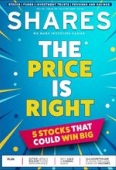Archived article
Please note that tax, investment, pension and ISA rules can change and the information and any views contained in this article may now be inaccurate.
Managers vs machines - are active funds worth the extra cost?

One of the biggest investment trends of the past decade has been the rise of passive funds. These funds mechanically track an index, rather than trying to beat it by selecting certain stocks.
Their simple objective, combined with low charges, has provided serious competition to active managers, and these passive funds now make up around £1 of every £5 held by UK investors.
To find out how active managers have fared against the machine-like strategy of index trackers, we looked at performance across the three biggest fund sectors over the past 10 years, to see just how many active funds outperformed their passive peers. The results can be seen in the table.
The performance figures show returns in the past 10 years have been all about where you put your money, rather than who you invested with.


The US stock market has been the place to be, and that’s reflected in the strong absolute performance of active funds investing across the pond, and global active funds too, because the US now makes up such a large part of the investable international universe.
It’s simply been better to be invested in a poorly performing US or global fund (bottom quartile performance), than a UK high flyer (top quartile performance).
However active managers as a whole have not thrived in the US and Global sectors, and only a relatively small proportion have beaten a typical index tracker, 34% of funds in the Global sector and 23% in the US.

In contrast, the UK has been a bright spot for active management, with more than eight in 10 active funds outperforming the average tracker, despite absolute returns looking shabby compared to global and US peers. Our analysis suggests that investors with a budget for active management would therefore be better off allocating this to the UK portion of their portfolio, rather than the Global and US sectors.
While they are in the minority, in the global sector there were still a substantial number of funds which posted strong outperformance of their passive peers, including offerings from well-known names like Baillie Gifford, Fundsmith and Lindsell Train. However, these are the exception rather than the rule, and so investors need to be very discerning if they are allocating money to global active managers.
It pays to be discriminating wherever you’re allocating money, but UK funds have shown a much greater tendency to outperform their passive peers over the long term, so your chances of getting value from active management are improved when you go fishing in this pool.
UK MANAGERS – FLATTERED BY MID CAP EXPOSURE
There are undoubtedly skilful active managers plying their trade in the UK, but there are also structural reasons why the UK market is a fertile hunting ground for active management. The standout performers of the past 10 years in the UK have been mid cap and small cap stocks.
Active managers tend to be overweight these areas, while UK index trackers have most of their portfolio invested in the FTSE 100, because they just invest according to market cap.
The strong outperformance of UK mid and small caps is in stark contrast to the US where in recent years, exceptional performance has been derived from megacap stocks like Apple, Alphabet and Amazon. These stocks will be in the top holdings of passive funds in both US and Global sectors, lifting the bar that much higher for active managers operating in these areas, because these companies have delivered such high returns.
TRACKER SLACKERS
In the UK there is a much wider dispersion of returns amongst passive funds compared to the US, with some funds posting performance significantly below their benchmark index. This lowers the threshold UK active managers need to beat to outperform the average tracker. In part, this again comes down to the highly divergent performance of small and mid caps compared to large caps, because some of the trackers available to UK investors simply follow the FTSE 100.
But even looking at funds tracking the broader FTSE All Share, the best performing passive fund returned 84% over 10 years, and the worst performer returned 66%. This comes down to that silent destroyer of tracker performance, charges.
Many UK tracker funds are now keenly priced to support investor demand, but there are still a few ‘tracker slackers’ kicking around – passive funds which charge fees more commensurate with an active approach.
If your gross returns are simply the index, high charges on a tracker fund are going to lead to substantial underperformance over the long term.
DISCLAIMER: This article cites research from AJ Bell which is the owner and publisher of Shares magazine.
Tom Sieber and Daniel Coatsworth who edited this article both own shares in AJ Bell.
Important information:
These articles are provided by Shares magazine which is published by AJ Bell Media, a part of AJ Bell. Shares is not written by AJ Bell.
Shares is provided for your general information and use and is not a personal recommendation to invest. It is not intended to be relied upon by you in making or not making any investment decisions. The investments referred to in these articles will not be suitable for all investors. If in doubt please seek appropriate independent financial advice.
Investors acting on the information in these articles do so at their own risk and AJ Bell Media and its staff do not accept liability for losses suffered by investors as a result of their investment decisions.

 magazine
magazine








